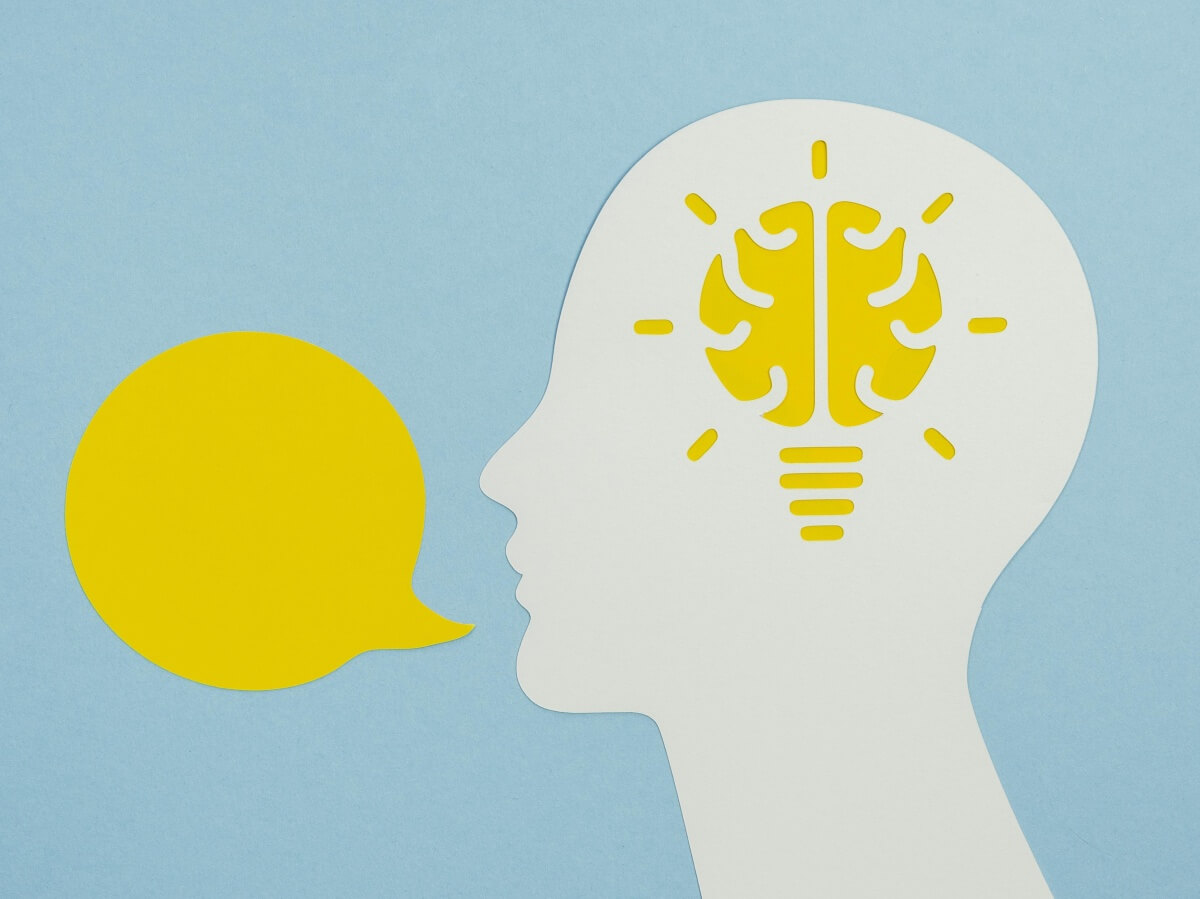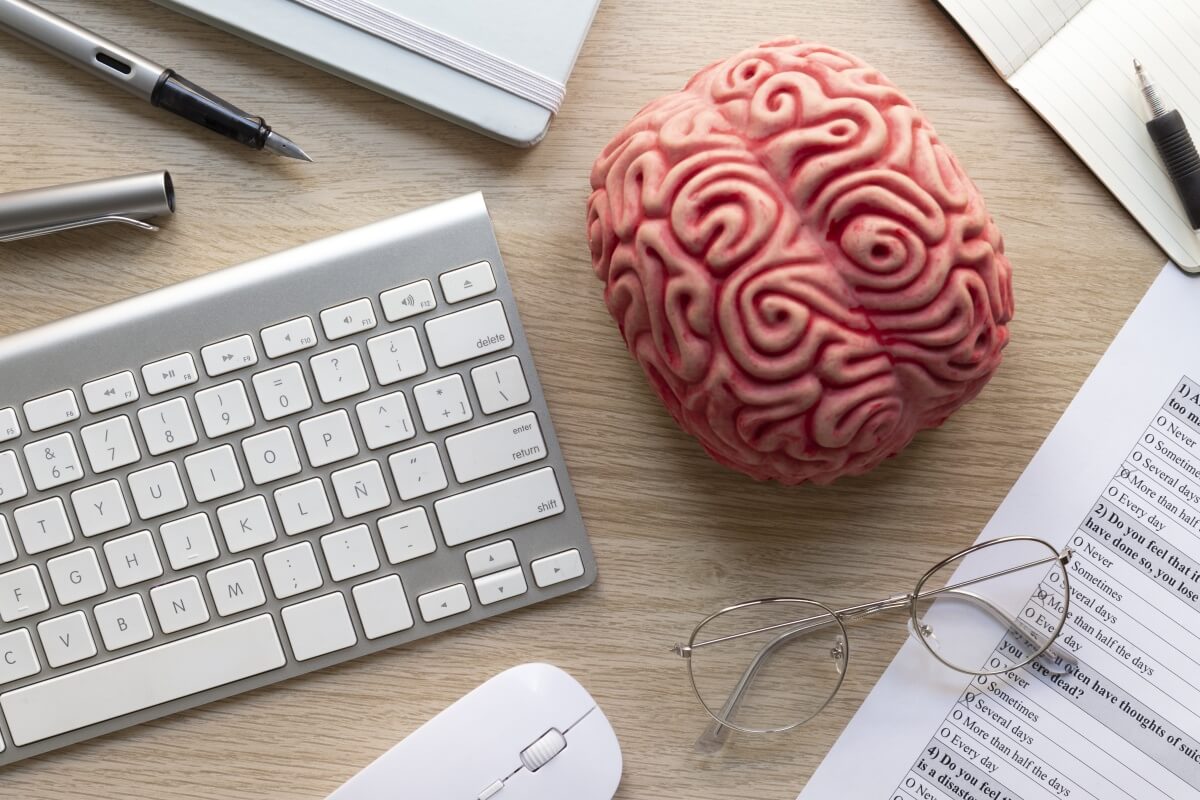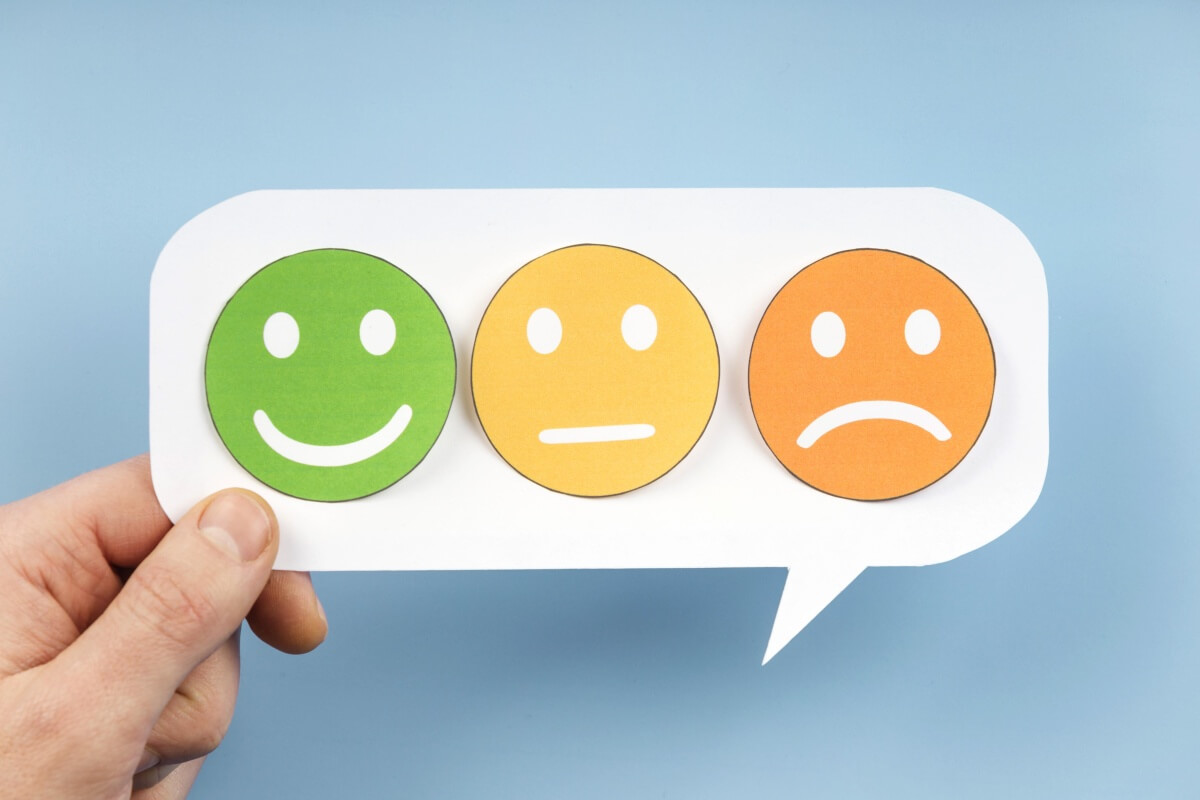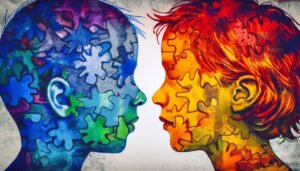Table of Contents
Measurement of Emotional Intelligence

Self-Reflective Methods
Emotional Intelligence – the foundation of human interactions and personal success. It forms the bridge between understanding our own emotions and those of others. The ability to recognize, understand, and handle emotions is fundamental – both in private life and in the professional world. But how can we measure and assess our emotional intelligence?
Measurement Methods of Emotional Intelligence
Among the most effective measurement methods of Emotional Intelligence is self-reflection, a process that allows us to examine inner emotional states. Self-reflective methods offer a viable approach. These include:
- Journals that serve as daily mirrors of emotional experiences.
- Self-assessment questionnaires that provide structured insights.
- Feedback apps, which offer regular feedback and developmental progress.
Journaling, for example, enables a deep analysis of emotional experiences. Individuals who regularly record their thoughts and feelings develop a heightened awareness of their emotional patterns and reactions. Scientific studies confirm that this practice significantly improves emotional self-awareness.
Self-assessment questionnaires are another tool for evaluating Emotional Intelligence. These assessments allow people to reflect on and assess their emotional competencies using scientifically developed scales.
Emotional Intelligence Testing Methods
By utilizing technological solutions such as feedback apps, Emotional Intelligence assessment methods are integrated into our digital everyday life. These apps provide user-friendly, immediate feedback through systematic questions and can thus contribute to enhancing emotional self-knowledge. They not only facilitate the collection of self-assessment data but often also enable benchmarking with normative data.
Although these tools provide invaluable insights into our emotional inner world, it is crucial to view the data with a critical eye and place it in a broader context – this is where professionals come into play. Psychologists and coaches with expertise in Emotional Intelligence measurement can conduct more in-depth analyses and create customized development plans.
Emotional Self-Regulation through Reflection
The use of self-reflective methods is only the beginning of a continuous development process. By becoming aware of and assessing emotional states using journals, questionnaires, and apps, we learn to better understand our emotions and manage them in a way that can sustainably enhance our quality of life. Applying these methods thus forms a fundamental basis for developing our Emotional Intelligence and achieving both personal and professional goals.
Observation and Behavioral Analysis
Emotional intelligence is a buzzword gaining increasingly more importance, both in personal development and in the professional context. To understand how Emotional Intelligence can be measured, we need to delve into the Measurement Methods of Emotional Intelligence.
360-Degree Feedback: A Holistic Approach to Emotional Intelligence Assessment
360-degree feedback is one of the most sought-after methods when it comes to assessing Emotional Intelligence in organizations. Individuals receive feedback on their behavior and social interactions from a variety of people – supervisors, colleagues, employees, and sometimes even customers. These various perspectives provide a comprehensive picture of a person’s emotional competencies.
An example of this is a manager whose ability to self-regulate is being assessed. His employees might praise his calmness in stressful situations, while his colleagues might highlight his constructive criticism in team meetings. These multidimensional insights allow the individual to develop a better self-understanding of their emotional strengths and areas for development.
Behavior Coding Systems: Detecting Emotional Intelligence in Detail
Another effective Emotional Intelligence Testing Method is the use of behavior coding systems. These allow for the categorization and analysis of specific emotional responses and behaviors in social interactions. Video recordings of interactions are evaluated in detail to capture subtle cues such as facial expressions, gestures, and tone of voice.
For instance, in a meeting, a leader not only shows that they are actively listening by nodding and asking appropriate questions but also displays empathy through finely tuned facial expressions for the concerns of others. Such in-depth analyses provide valuable insights, thereby refining Emotional Assessment Methods and allowing for a precise evaluation of emotional skills.
The methods we use to measure Emotional Intelligence are crucial for understanding the actual effectiveness of applying emotional intelligence in the real world. Combining 360-degree feedback and behavior coding systems allows us to merge self-perception with objective observation to draw a complete picture of a person’s emotionally intelligent behavior. This enables us not only to better recognize the potential of individuals but also to create targeted development programs to enhance emotional competencies.
Development-Oriented Perspectives on Emotional Intelligence

Training Programs and Their Evaluation
Emotional intelligence is a skill that can be learned and developed just like technical expertise or physical fitness. Many believe that our emotional perception is a static aspect of our personality, but studies and successful training programs show that this is an area of development that we should not underestimate. The emotional intelligence testing methods used to assess before and after such trainings provide valuable insights into our progress.
Measurement Methods of Emotional Intelligence
The evaluation of training programs requires that we define and capture measurable indicators of emotional intelligence. Measuring emotional intelligence is complex, however, as it requires not only knowledge but also the application and reflection of emotional skills. Emotional intelligence assessment often involves questionnaires based on self-report or external evaluations, as well as observation in real or simulated social interactions.
- Rigorous before-and-after comparisons ensure that individual differences are considered and that development over time can be validly traced.
- Longitudinal studies allow us to evaluate the sustainability of trainings and determine whether short-term improvements are sustainable in the long term.
- Emotional assessment methods must capture both the intrapersonal dimension (self-perception, self-regulation) and the interpersonal dimension (empathy, social skills) of emotional intelligence.
Practical Examples and Research Findings
The effectiveness of emotional intelligence training programs can be illustrated by impressive case studies. A practical example involves leaders who, through targeted training, can better motivate their employees and resolve conflicts more efficiently. Here, improvements in emotional self-regulation and the ability to empathize are often in the foreground. Empirical evidence shows that emotional intelligence testing can demonstrate significant development when training is specifically tailored to the needs of the participants.
To emphasize scientific evidence, it is worthwhile to rely on meta-analyses that summarize a multitude of studies and identify clear trends. They provide robust proof that systematic training can enhance emotional intelligence to a measurable extent. Ultimately, however, it depends on the accurate and consistent application of emotional intelligence measurement to confirm the actual effectiveness of the trainings.
Finally, it should be emphasized that emotional intelligence plays a central role in many areas of life, and that there are indeed opportunities to train and enhance this essential skill. The challenge lies in refining measurement methods and training programs to fully realize the potentials of emotional intelligence and to use it profitably both professionally and privately.
Using Technology to Enhance Emotional Intelligence
Emotional intelligence, a skill traditionally developed in group discussions, therapies, or seminars, is undergoing a transformation through technological advancement. In this context, methods of measuring emotional intelligence as well as emotional intelligence assessment are gaining importance as they are redefined through innovative technological solutions. Specialized software and apps using Artificial Intelligence (AI) and Virtual Reality (VR) help users to better understand and express their emotions more effectively.
Use of AI to Deepen Emotional Understanding
AI systems have begun to recognize and interpret human emotions. This technology is used to provide real-time feedback and enhance awareness and control over one’s own emotional states. For instance, emotional intelligence testing procedures can be augmented by facial recognition software that analyzes micro-expressions and helps users interpret subtle emotional cues better.
- Programs that analyze speech patterns and tone of voice provide valuable feedback on emotional states.
- Apps featuring AI-based diaries and emotional tracking identify patterns in emotional well-being.
- Training through AI coaching apps offering personalized scenarios specifically aims to foster sensitive skills.
Virtual Reality as a Training Ground for Social Skills
Virtual Reality creates safe, immersive environments where users can practice their interpersonal skills. In simulated scenarios, problematic situations can be enacted without the fear of real social consequences. This offers the opportunity to refine skills such as empathy, conflict resolution, and teamwork. The immediate feedback provided by VR environments helps users learn from the direct outcomes of their emotional responses.
- Role-playing games equipped with VR headsets enable users to adopt the perspective of others and deepen empathy.
- Simulated public scenarios assist individuals with anxiety disorders in preparing for social interactions.
- Interactive VR experiences offer the possibility to analyze and adjust specific emotional responses in a controlled environment.
Scientific Foundations and the Practice of Technology Use
The integration of technology into the development of emotional intelligence is based on sound scientific research. Emotional assessment methods and emotional intelligence measurement are guided by neuropsychological and behavioral science research to provide accurate insights into affective processes. Studies show that technologies like AI and VR offer the ability to regulate emotions and improve social skills.
- The use of real-time feedback systems correlates with increased self-awareness and emotion regulation.
- Insights from behavioral science contribute to maximizing the effectiveness of VR training in interpersonal competencies.
- Long-term studies suggest that continued training with technological tools can significantly strengthen emotional intelligence.
The promotion of emotional intelligence through technology is redefining the boundaries between humans and machines while simultaneously creating innovative paths to unfold and enhance our emotional capabilities.
Summary
The development and refinement of our emotional skills is key to successful and meaningful human interactions as well as personal success. Insights from science are increasingly highlighting measurement methods for Emotional Intelligence and Emotional Assessment Methods. They provide us with tools to make the complex area of emotions more tangible and to enhance our skills.
Assessment Methods for Better Self-Understanding
Self-reflection is a fundamental method that helps us better understand our emotional states. Various methods are used for this purpose:
- Diaries are useful tools for self-analysis and help us recognize emotional patterns.
- Structured self-assessment questionnaires allow for systematic reflection of our emotional abilities.
- Feedback apps integrate Emotional Intelligence Measurement into everyday life by providing regular and user-friendly feedback.
Especially the 360-degree feedback has become established in organized settings. It enables individuals to receive valuable feedback on their emotional skills through the perspectives of colleagues, subordinates, and superiors. Combined with behavioral coding systems, where emotional reactions are precisely examined through analysis of facial expressions and tone of voice in social interactions, a comprehensive picture of a person’s Emotional Intelligence emerges.
Technological approaches like AI and VR are transforming the measurement methods of Emotional Intelligence. While AI systems are capable of reading emotions and responding to them, VR environments provide a safe field to practice social skills without real consequences. The scientific basis for the use of such technologies ensures that they can sustainably develop emotional competencies.
To measure the effectiveness of emotional intelligence training, it is important to employ robust Emotional Intelligence Testing Methods:
- Rigorous comparisons before and after interventions ensure a valid measurement.
- Long-term studies verify the sustainability of learned competencies.
- Intrapersonal as well as interpersonal dimensions of Emotional Intelligence must be captured to obtain a comprehensive picture.
Practical examples and research findings show that emotional intelligence is not a fixed quantity but can be improved through targeted training. It is imperative that accurate and consistent Emotional Intelligence Assessment is used to reliably measure the effects of such trainings.
In conclusion, dealing with emotions and their management increasingly plays a significant role in our professional and private lives. The challenge lies in further refining the measurement methods of Emotional Intelligence and fully unlocking emotional skills to use them profitably.
FAQ – Measurement Methods for Emotional Intelligence
What methods and tools are commonly used to measure and assess emotional intelligence?
To measure emotional intelligence, research and practice often use questionnaires such as the Emotional Intelligence Appraisal or the Mayer-Salovey-Caruso Emotional Intelligence Test. These tools assess an individual’s ability to perceive, understand, and manage emotions in themselves and others. Additionally, professionals in coaching and organizational development use role-plays and behavioral observations to capture and enhance the application of emotionally intelligent competencies in everyday life.
What established tests and instruments are commonly used to assess emotional intelligence?
To assess emotional intelligence, the Emotional Intelligence Appraisal is often used, developed by the authors of the bestseller Emotional Intelligence 2.0. Another widely used tool is the Mayer-Salovey-Caruso Emotional Intelligence Test System, specifically designed to measure the four core areas of emotional intelligence: perception, utilization, understanding, and management of emotions. These tests provide in-depth insights into a person’s emotional competencies and help identify areas for personal growth.
What standardized tests and questionnaires are commonly used to assess a person’s emotional intelligence?
To assess the emotional intelligence of a person, tools such as the Emotional Intelligence Appraisal, the Mayer-Salovey-Caruso Emotional Intelligence Test (MSCEIT), and the Emotional Competence Inventory are often used. These tests measure various aspects of emotional intelligence, such as the ability to perceive, understand, and regulate one’s own and others’ emotions. They provide insightful views on how individuals react in social situations and utilize emotions for effective communication and problem-solving.








